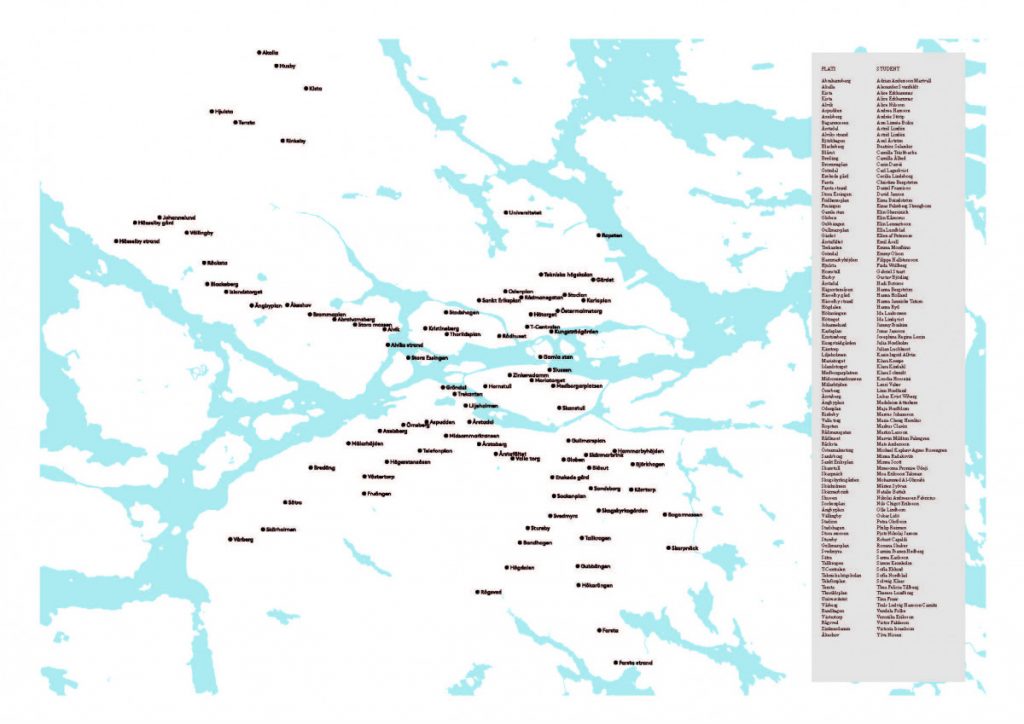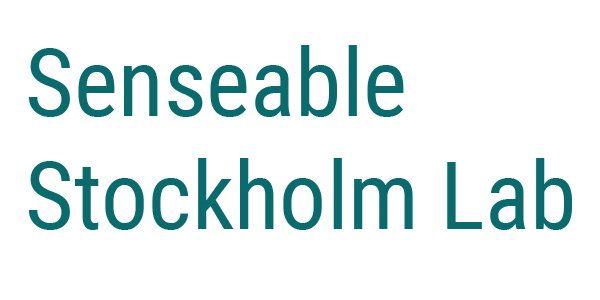One hundred places – explore Stockholm – 4-8 May 2020
The exhibition “One hundred places” shows a selection of exploratory surveys conducted within the framework of urban building education in year 3 of the architectural education at KTH Architecture. The students each present a place in the urban landscape of Stockholm.

To understand the city as a coherent system, to gain a view of the characteristics of different parts of the city based on city typologies and to report on urban density contributes to an increased understanding of the city and its conditions for change.
Based on a number of exploratory surveys, it is possible to address themes such as urban morphology, urban systems, densification, and digitalization as support for urban building practice.
The digital version of the exhibition will be published shortly.
Urban morphology
The city’s development pattern is the result of a number of different parameters such as politics, ideology, land policy, social ideas, land ownership, legislation, economic conditions, culture and the ideal of architecture. The story can be read based on the urban landscape. How the city is shaped greatly affects our experience of the city and the conditions for what life we can live in the city. Different neighborhoods and city types can be associated with different characters and qualities and create a variety of environments and social spaces .
Systems in the city
How the city is connected through public space and the built environment defines the spatial relationships in the city. Streets, squares, the subway system and water connections affect how different parts are interconnected and affect the exchange between the different parts of the city and between those who live and work in the city. The different situations created in the city provide specific conditions for how one can act and use the city and this affects the conditions for the future land use. There are also many less visible systems to consider such as power grids and water grids.
Densification
Density as a strategy for growing cities is common but also controversial. Many people are affected. By increasing the knowledge and reviewing the understanding of density, it is possible to obtain a better foundation for how one can, and should, act in the future in order to achieve goals of, for instance, sustainability in relation to densification. What is already built, green areas, parks, terrain and water features, creates both opportunities and limitations for the next annual growth ring. Densification of the city may involve the addition of new buildings as well as parks.
Digitalization
With increasing digitalization and growing opportunities to link detailed information about the built environment with the nature of the city’s different geographies, opportunities arise to be able to obtain more accurate planning documentation. Good current descriptions also facilitate the formulation of goals and strategies and it is possible to see to what extent goals are met. The digitalization can be used to support the design process. In models of the city it is possible to analyze the consequences of different alternatives for urban development, which provides support for priorities, standpoints and new strategies.



